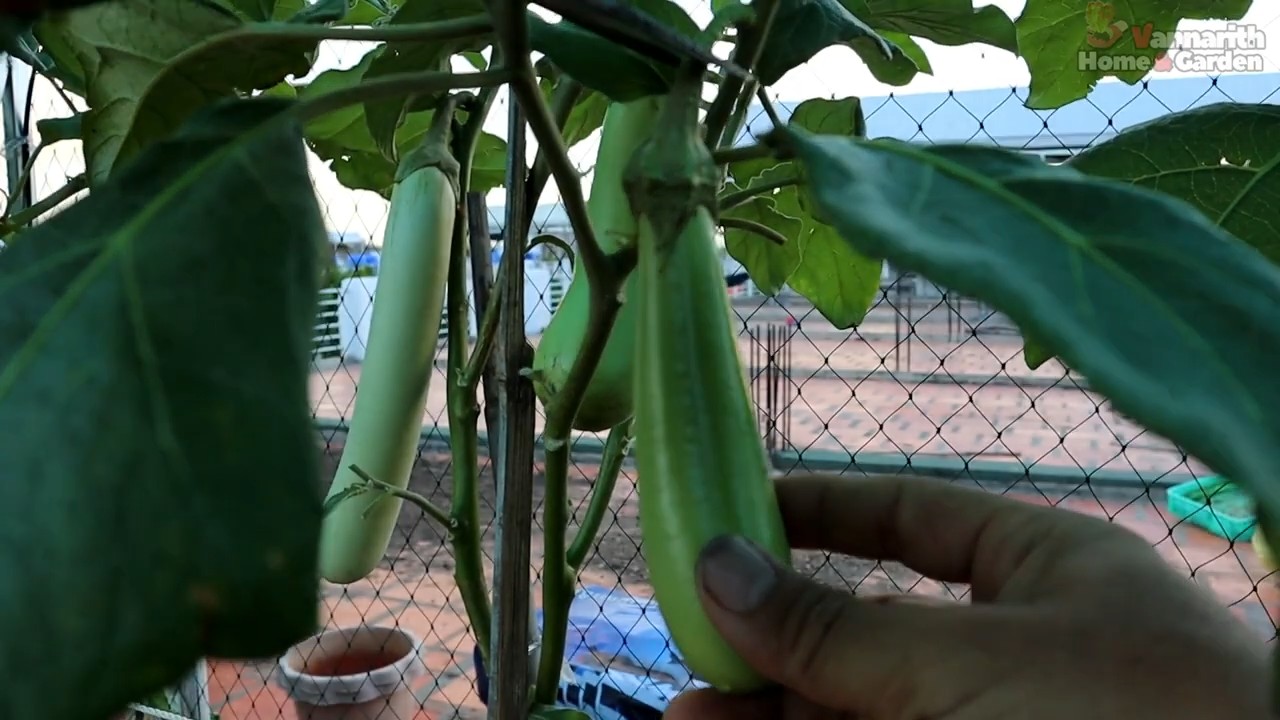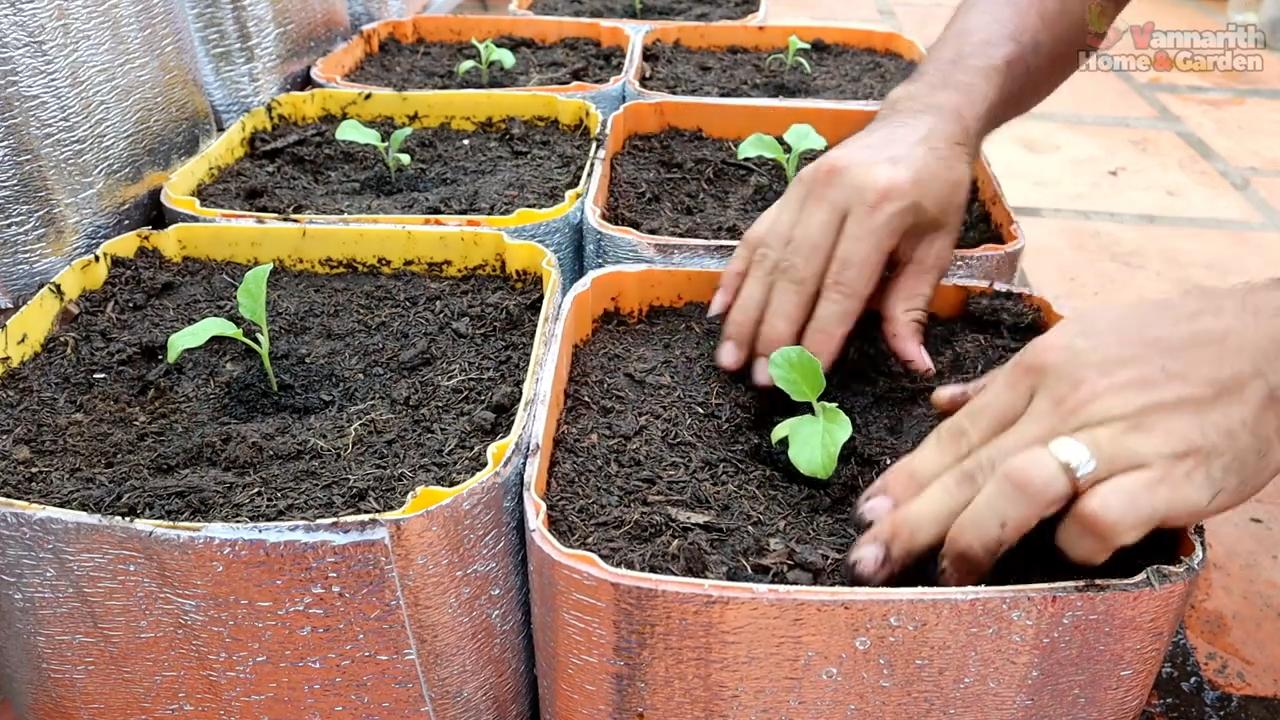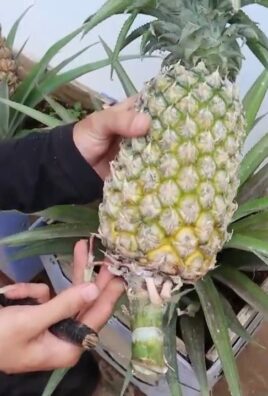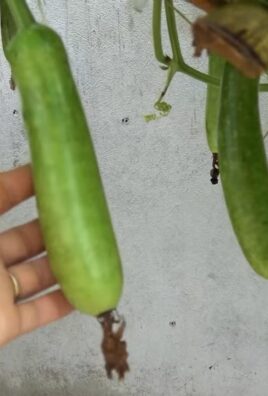Growing eggplants at home can seem daunting, but trust me, with a few clever tricks and DIY hacks, you’ll be harvesting these glossy beauties in no time! Forget those bland, store-bought eggplants – imagine sinking your teeth into a perfectly grilled eggplant, bursting with flavor, grown right in your own backyard (or even on your balcony!).
Eggplants have a rich history, dating back thousands of years to ancient Asia, where they were prized for both their culinary and medicinal properties. They eventually made their way to Europe and then the Americas, becoming a staple in cuisines around the world. But let’s be honest, the eggplants you find in the supermarket often lack the vibrant taste and texture of homegrown varieties.
That’s where this DIY guide comes in! I’m going to share my favorite tips and tricks for successfully growing eggplants at home, even if you’re a complete beginner. We’ll cover everything from choosing the right variety for your climate to dealing with common pests and diseases. Why spend money on subpar eggplants when you can easily cultivate your own delicious crop? Get ready to unleash your inner gardener and enjoy the satisfaction of harvesting your very own homegrown eggplants!

Growing Eggplants Yourself: Your Comprehensive DIY Guide
Hello garden friends! Have you ever dreamed of harvesting juicy, shiny eggplants directly from your own garden? I can tell you, it’s not as hard as you might think! With a little patience and the right tips, you too can soon be enjoying your own eggplants. In this article, I’ll show you step-by-step how to get it done. Let’s get started!
What You’ll Need for Growing Eggplants
Before we get started, here is a list of everything you’ll need:
- Eggplant seeds or young plants: It’s best to choose varieties that are suitable for your climate. Ask at the garden center!
- Seed-starting mix: For starting seeds indoors.
- Pots or seed trays: For the seeds or young plants.
- Potting soil: For planting out in a garden bed or in larger pots.
- Compost or organic fertilizer: For a good supply of nutrients.
- Watering can or garden hose: For regular watering.
- Plant stakes or a trellis: Eggplant plants can grow quite tall and need support.
- Garden shears: For pruning suckers and for harvesting.
- Mulching material (e.g., straw or wood chips): To keep the soil moist and suppress weeds.
- A sunny location: Eggplants love the warmth!
- Patience: Eggplants take some time to ripen.
The Preparation: Starting Eggplants Indoors
Eggplants are little frost-haters and therefore need a warm environment to grow well. That’s why it’s advisable to start them indoors.
- Sowing: Fill your seed trays or pots with seed-starting mix. Lightly press the soil down and sow the eggplant seeds about 0.5 to 1 cm (0.2-0.4 inches) deep. Cover the seeds with soil and water them gently.
- Location: Place the seed trays in a warm and bright spot. A windowsill above a heater is ideal. The ideal germination temperature is 22-25°C (72-77°F).
- Moisture: Keep the soil moist, but not wet. It’s best to spray the soil regularly with a spray bottle.
- Germination: The first seedlings should be visible after about 1-2 weeks.
- Pricking out: As soon as the small eggplant plants have developed their first true leaves (in addition to the initial seed leaves), it’s time to prick them out. This means you carefully take them out of the seed trays and transplant them into larger pots with potting soil. Be careful not to damage the roots.
- Further care: Place the pricked-out eggplant plants back in a bright and warm spot and water them regularly.
Planting Out: Moving Eggplants to the Bed or Pots
As soon as there is no more danger of frost (usually mid-May after the last frost date), the eggplant plants can go outdoors.
- Hardening off: Before you plant the eggplants in the bed or in pots, you should slowly acclimate them to outdoor conditions. To do this, place them outside for a few hours during the day and bring them back in at night. Increase the time they spend outdoors each day until the plants have acclimatized.
- Location choice: Eggplants love the sun! Choose a sunny and wind-protected location for your eggplant plants.
- Soil preparation: Loosen the soil well and mix in compost or organic fertilizer. Eggplants are heavy feeders and need a lot of nutrients.
- Planting: Dig a hole large enough to accommodate the root ball of the eggplant plant. Carefully place the plant in it and fill the hole with soil. Press the soil down lightly and water the plant well.
- Planting distance: Ensure there is sufficient planting distance. Eggplant plants need space to develop. A distance of 40-50 cm (16-20 inches) between plants and 60-80 cm (24-32 inches) between rows is ideal.
- Trellis/Support: Place a stake or trellis next to the eggplant plant right after planting. This way, you can tie it to the support later as it grows.
Care: Providing for Eggplants Correctly
For your eggplant plants to grow well and produce a lot of fruit, proper care is crucial.
- Watering: Eggplants need regular water, especially during flowering and fruit formation. It’s best to water in the morning or evening so the water doesn’t evaporate as quickly. Avoid waterlogging, as this can lead to root rot.
- Fertilizing: Fertilize your eggplant plants regularly with compost or organic fertilizer. Start about 2-3 weeks after planting out and repeat the fertilization every 2-3 weeks.
- Mulching: Cover the soil around the eggplant plants with mulching material like straw or wood chips. This keeps the soil moist, suppresses weeds, and protects the fruit from dirt.
- Removing suckers: Eggplant plants form many side shoots. To promote fruit formation, you should regularly remove the side shoots from the leaf axils. This is called removing suckers. Leave only the main stem and a few side shoots.
- Pests and diseases: Watch out for pests like aphids or whiteflies. In case of an infestation, you can treat the plants with a natural insecticide. Fungal diseases like powdery mildew can also occur. Ensure good ventilation for the plants and remove affected leaves.
The Harvest: Harvesting Eggplants Correctly
The time has finally come! The eggplants are ripe and can be harvested.
- Signs of ripeness: Eggplants are ripe when they have a shiny, deep purple color and feel firm. The skin should yield slightly when you press it gently.
- Harvesting: Cut the eggplants with garden shears. Leave a small stem on the fruit.
- Storage: Eggplants do not last long. It’s best to process them immediately after harvesting. They will keep in the refrigerator for about 1-2 weeks.
Additional Tips for Growing Eggplants
Overwintering: In mild regions, eggplants can be overwintered. Cut the plant back severely in the fall and place it in a bright and cool location. Water it only a little. In the spring, you can then move it back outdoors.
Variety selection: Choose eggplant varieties that are suitable for your climate. There are many different types, from classic purple eggplants to white, green, or striped varieties.
Companion planting: Eggplants get along well with other vegetables like basil, marigolds, or lettuce.
Crop rotation: Do not plant eggplants in the same spot every year. Rotate the location to prevent diseases and pests.

Conclusion
So, there you have it! Mastering the art of growing eggplants at home isn’t just about saving money; it’s about connecting with your food, enjoying unparalleled freshness, and experiencing the sheer joy of nurturing life from a tiny seed to a bountiful harvest. We’ve walked you through the essential steps, from selecting the right variety for your climate to troubleshooting common problems. But the real magic happens when you take that leap of faith and get your hands dirty.
Why is this DIY trick a must-try? Because store-bought eggplants simply can’t compare to the flavor and texture of homegrown ones. Imagine biting into a perfectly ripe eggplant, still warm from the sun, its flesh creamy and subtly sweet. That’s an experience you can’t replicate with produce that’s been shipped across the country. Plus, you have complete control over the growing process, ensuring that your eggplants are free from harmful pesticides and chemicals.
But the benefits extend beyond just taste and health. Growing your own eggplants is a deeply rewarding experience. It’s a chance to learn about the natural world, to connect with the seasons, and to appreciate the hard work that goes into producing the food we eat. It’s also a great way to reduce your carbon footprint and support sustainable agriculture.
Don’t be afraid to experiment! Try different varieties of eggplants to find your favorites. Perhaps you’ll fall in love with the classic Globe eggplant, known for its large, meaty fruit. Or maybe you’ll prefer the slender, delicate Japanese eggplant, perfect for stir-fries and grilling. Consider growing white eggplants for a unique visual appeal and a slightly milder flavor. You can even try growing eggplants in containers if you have limited space.
Variations and Suggestions:
* Companion Planting: Plant basil, marigolds, or thyme near your eggplants to deter pests and attract beneficial insects.
* Grafting: For even greater yields and disease resistance, consider grafting your eggplant seedlings onto a more vigorous rootstock.
* Vertical Gardening: If you’re short on space, train your eggplant plants to grow vertically on a trellis or stake.
* Seed Saving: Save seeds from your best-performing eggplant plants to continue the cycle of homegrown goodness year after year.
* Eggplant Recipes: Explore the culinary possibilities of your homegrown eggplants. From classic eggplant parmesan to smoky baba ghanoush, the options are endless.
We encourage you to embark on this exciting journey of growing eggplants at home. It may seem daunting at first, but with a little patience and dedication, you’ll be rewarded with a bountiful harvest of delicious, homegrown eggplants. And remember, every gardener starts somewhere. Don’t be discouraged by setbacks; learn from your mistakes and keep growing!
Now, we want to hear from you! Have you tried growing eggplants at home? What are your favorite tips and tricks? What challenges have you faced, and how did you overcome them? Share your experiences in the comments below. Let’s create a community of eggplant enthusiasts and learn from each other. Your insights could inspire others to take the plunge and discover the joys of homegrown eggplants. Let’s get growing!
Frequently Asked Questions (FAQ)
What is the best time to start growing eggplants from seed?
The ideal time to start growing eggplants from seed is typically 6-8 weeks before the last expected frost in your area. Eggplants are warm-season crops and require a long growing season, so starting them indoors early gives them a head start. Check your local weather forecasts and planting guides to determine the specific date for your region. If you live in a warmer climate with a longer growing season, you can start seeds later or even direct sow them into the garden after the danger of frost has passed.
How much sunlight do eggplants need?
Eggplants thrive in full sun, requiring at least 6-8 hours of direct sunlight per day. Sunlight is crucial for photosynthesis, which fuels the plant’s growth and fruit production. Choose a planting location that receives ample sunlight throughout the day. If you’re growing eggplants in containers, make sure to place them in a sunny spot on your patio or balcony. Insufficient sunlight can lead to leggy growth, reduced flowering, and smaller, less flavorful fruits.
What kind of soil is best for growing eggplants?
Eggplants prefer well-drained, fertile soil that is rich in organic matter. The ideal soil pH is between 6.0 and 7.0. Before planting, amend your soil with compost, aged manure, or other organic materials to improve its drainage, fertility, and water-holding capacity. Avoid heavy clay soils, as they can become waterlogged and suffocate the roots. If you have clay soil, consider growing eggplants in raised beds or containers with a well-draining potting mix.
How often should I water my eggplant plants?
Eggplants need consistent moisture, especially during hot, dry weather. Water deeply and regularly, aiming to keep the soil consistently moist but not waterlogged. The frequency of watering will depend on your climate, soil type, and the size of your plants. As a general rule, water when the top inch of soil feels dry to the touch. Avoid overhead watering, as it can promote fungal diseases. Instead, water at the base of the plants using a soaker hose or drip irrigation system.
What are some common pests and diseases that affect eggplants?
Eggplants are susceptible to a variety of pests and diseases, including aphids, flea beetles, spider mites, tomato hornworms, and fungal diseases like verticillium wilt and early blight. Regularly inspect your plants for signs of infestation or disease. Use organic pest control methods, such as insecticidal soap, neem oil, or handpicking, to control pests. To prevent fungal diseases, ensure good air circulation around your plants, avoid overhead watering, and apply a fungicide if necessary. Crop rotation can also help to reduce the risk of soilborne diseases.
How do I know when my eggplants are ripe?
Eggplants are typically ready to harvest when they are firm, glossy, and have reached their mature size and color. The skin should be smooth and unblemished. Gently press the skin with your thumb; if it leaves a slight indentation, the eggplant is ripe. Overripe eggplants will become dull, soft, and bitter. Use a sharp knife or pruning shears to cut the eggplant from the plant, leaving a short stem attached.
Can I grow eggplants in containers?
Yes, eggplants can be successfully grown in containers, making them a great option for gardeners with limited space. Choose a large container that is at least 12-18 inches in diameter and depth. Use a well-draining potting mix and ensure that the container has drainage holes. Place the container in a sunny location and water regularly. You may also need to provide support for the plants as they grow, such as a stake or trellis.
How can I encourage more fruit production on my eggplant plants?
To encourage more fruit production, ensure that your eggplant plants are receiving adequate sunlight, water, and nutrients. Fertilize regularly with a balanced fertilizer or a fertilizer specifically formulated for fruiting vegetables. Prune away any suckers or non-productive growth to direct the plant’s energy towards fruit production. You can also hand-pollinate the flowers by gently shaking the plant or using a small brush to transfer pollen from one flower to another.
Why are my eggplant flowers falling off without producing fruit?
Flower drop in eggplants can be caused by a variety of factors, including temperature stress (too hot or too cold), insufficient pollination, lack of water, or nutrient deficiencies. Ensure that your plants are receiving adequate sunlight, water, and nutrients. If temperatures are consistently above 90°F or below 60°F, provide shade or protection. Hand-pollinate the flowers to ensure pollination. You can also try spraying the plants with a blossom set hormone to encourage fruit development.
How do I store harvested eggplants?
Store harvested eggplants in a cool, dry place, such as the refrigerator. Wrap them loosely in plastic wrap or place them in a perforated plastic bag to prevent them from drying out. Eggplants are best used within a week of harvesting. Avoid storing them near ethylene-producing fruits, such as apples and bananas, as this can cause them to ripen and spoil more quickly.





Leave a Comment